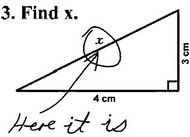Getting yet more cds ready; Jon Pareles writes on the "long tail" getting its day
Friends, I've been sick as a dog this week, but used the last few days of being unable to drag myself out the door pretty well - I resurrected old Pratie Heads recordings from the dead. That is to say, I ran 23-year-old cassettes into my computer and edited them digitally, even removing a couple weird notes that have bothered me for decades. In another couple days, I'll have graphics for them and will send them off to be duplicated. You know how much this all costs me?
- Editing, remastering, sequencing, burning two master cds=$0.00
- Scanning an old photo and doing cover notes=$0.00
- Writing liner notes and running them into the template=$0.00
- 100 copies of a DOUBLE cd=about $3.50 each!
And that brings me to the article below, written by one of my oldest friends. I met Jon Pareles in 1971, on my first day at Yale. He already had an awful lot of LPs. We were roommates later in Cambridge and when he moved out to take his first job at Rolling Stone he organized his friends and siblings as a bucket brigade to move the records out of his room.
Nothing much has changed. I have a photo (I won't show you, though) of his gorgeous apartment in Manhattan. Gorgeous except for the corner which is his office, where there are cds in stacks taller than we are. I didn't know you could stack cds like that.
This is an article about what sometimes is called the Long Tail on the internet. While superstars may accumulate the most hits and the most attention, online it's possible for those of arcane interests to find what they're looking for, too.
For instance, over on my Caray, Caray! blog (where we recap telenovelas in English for people who are addicted to them but don't understand Spanish) I did an informal investigation while I was hanging out in bed here. Over the last couple days we had visitors from Albania, Argentina, Australia, Belgium, Belize, Bosnia and Herzegovina, Brazil, Bulgaria, Canada, Costa Rica, Croatia, Denmark, Denmark, Dominican Republic, Egypt, Finland, France, Germany, Greece, India, Italy, Japan, Latvia, Lebanon, Lithuania, Malaysia, Mexico, Netherlands, New Zealand, Nigeria, Novosibirsk, Oman, Paraguay, People's Republic of China, Peru, Philippines, Poland, Poland, Portugal, Puerto Rico, Republic of Moldova, Romania, Russian Federation, Saudi Arabia, Serbia and Montenegro, Slovenia, Spain, Sweden, Switzerland, Taiwan, Tanzania, Turkey, and the United Arab Emirates. Unthinkable a few years ago!
2006, Brought to You by You
By Jon Pareles for the New York Times, December 10, 2006
IMAGINE paying $580 million for an ever-expanding heap of personal ads, random photos, private blathering, demo recordings and camcorder video clips. That’s what Rupert Murdoch did when his News Corporation bought MySpace in July. Then imagine paying $1.65 billion for a flood of grainy TV excerpts, snarkily edited film clips, homemade video diaries, amateur music videos and shots of people singing along with their stereos. That’s what Google got when it bought YouTube in October.
What these two highly strategic companies spent more than $2 billion on is a couple of empty vessels: brand-named, centralized repositories for whatever their members decide to contribute.
All that material is "user-generated content," the paramount cultural buzz phrase of 2006. It’s a term that must appeal to the technocratic instincts of investors. I prefer something a little more old-fashioned: self-expression.
It’s on Web sites like YouTube, MySpace, Dailymotion, PureVolume, GarageBand and Metacafe. It’s homemade art independently distributed and inventively promoted. It’s borrowed art that has been warped, wrecked, mocked and sometimes improved. It’s blogs and open-source software and collaborative wikis and personal Web pages. It’s word of mouth that can reach the entire world.
It’s often inept, but every so often it’s inspired, or at least worth a mouse click. It has made stars, at least momentarily, of characters like the video diarist Lonelygirl (who turned out to be a fictional creation) and the power-pop band OK Go (whose treadmill choreography earned far more plays than its albums).
And now that Web entrepreneurs have recognized the potential for profit, it’s also a sweet deal: amateurs, and some calculating professionals, supply the raw material free.
All that free-flowing self-expression presents a grandly promising anarchy, an assault on established notions of professionalism, a legal morass and a technological remix of the processes of folk culture.
TECH oracles predicted long ago that by making worldwide distribution instantaneous, the Web would democratize art as well as other discourse, at least for those who are connected. The virtual painting galleries, the free songs, the video blogs, the comedy clips, the online novels — all of them followed the rise of the Internet and the spread of broadband as inevitably as water spills through a crack in a dam. Why keep your creativity, or the lack of it, to yourself when you can invite the world to see?
User-generated content — turning the audience into the auteur — isn’t exactly an online innovation. It’s as old as "America’s Funniest Home Videos," or letters to the editor, or community sings, or Talmudic commentary, or graffiti. The difference is that in past eras most self-expression stayed close to home. Users generated traditional cultures and honed regional styles, concentrated by geographical isolation.
In the 20th century recording and broadcasting broke down that isolation. Yet those same technologies came to reinforce a different kind of separation: between professional artist and audience. A successful artist needed not only creativity and skill, but also access to the tools of production — studios, recorders, cameras — and outlets for mass distribution.
As the music and movie businesses grew, they flaunted their economic advantage. They could spend millions of dollars to make and market blockbuster hits, to place them in theaters or get them played on radio and MTV. They owned the factories that could press vinyl albums and make the first CDs, before the days of the home CD burner and MP3s. Independent types could, and did, release their own work, but they couldn’t match the scale of the established entertainment business.
They still are at a disadvantage. But they are gaining.
Low-budget recording and the Internet have handed production and distribution back to artists, and one-stop collections of user-generated content give audiences a chance to find their works.
With gatekeepers out of the way, it’s possible to realize the do-it-yourself dreams ... to circle back to the kind of homemade art that existed long before media conglomerates and mass distribution. But that art doesn’t stay close to home. Online it moves breathtakingly fast and far.
Of course the notion of culture as something bestowed by creators and swallowed whole by audiences never had much to do with reality. Now fans can not only tell others about their responses to art — in the user-generated content of fan sites and discussion forums — but they can also demonstrate them directly.
IN the tsunami of self-expression, audiences have been forced to take on a much bigger job: sifting through the new stuff. For musicians, the Internet has become an incessant public audition. What once was winnowed down by A&R departments, and then culled again by radio stations and other media, is now online in all its hopeful profusion..
Individually the hopefuls can’t compete with a heavily promoted major-label star. Face it: Song for song, most of them just aren’t as good. But collectively they are stiff competition indeed: for time, for attention and, eventually, for cultural impact. The multiplying choices promise ever more diversity, ever more possibility for innovation and unexpected delight. But they also point toward an increasingly atomized audience, a popular culture composed of a zillion nonintersecting mini-cults. So much available self-expression can only accelerate what narrowing radio and cable formats had already begun: the separation of culture into ever-smaller niches.
That fragmentation is a problem for businesses, like recording companies and film studios, that are built on selling a few blockbusters to make up for a lot of flops. The music business in particular is going to have to remake itself with lower and more sustainable expectations, along the lines of how independent labels already work.
The promise of all the self-expression online is that genius will reach the public with fewer obstacles, bypassing the entrenched media. The reality is that genius has a bigger junk pile to climb out of than ever, one that requires just as much hustle and ingenuity as the old distribution system.
The entertainment business is already nostalgic for the days when it made and relied on big stars; parts of the public miss a sense of cultural unity that may never return. Instead both have to face the irrevocable fact of the Internet: There’s always another choice.
Labels: music



 A few of my daughter
Melina's great posts:
A few of my daughter
Melina's great posts:








1 Comments:
"The reality is that genius has a bigger junk pile to climb out of than ever, one that requires just as much hustle and ingenuity as the old distribution system."
True, but I love being able to find things for myself, and not having tastes dictated to me. I love it that I can 'meet' people who live on the other side of the world, and enjoy what they have to offer. I especially love it that you don't actually need to 'hustle' if you don't want to. You can just be there, to be found by the like-minded, or bored, or curious.
Post a Comment
<< Home